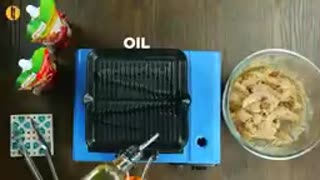Premium Only Content

Heat Exchanger Basics
A heat exchanger is a device designed to transfer heat between two or more fluids (liquid or gas) without mixing them. Heat exchangers are widely used in industries like HVAC, power generation, chemical processing, and automotive systems. Here's a breakdown of the basics:
1. Purpose of Heat Exchangers
Heat Recovery: Reuse waste heat to improve energy efficiency.
Cooling: Reduce the temperature of a fluid.
Heating: Increase the temperature of a fluid.
Phase Change: Support processes like condensation or evaporation (e.g., in refrigeration).
2. Principles of Heat Transfer
Heat exchangers operate based on three heat transfer mechanisms:
Conduction: Heat transfer through solid walls separating the fluids.
Convection: Heat transfer between the fluid and the wall.
Radiation: Negligible in most standard heat exchangers.
3. Types of Heat Exchangers
A. Based on Flow Arrangement
Parallel Flow:
Fluids flow in the same direction.
Less efficient for large temperature differences.
Counterflow:
Fluids flow in opposite directions.
Most efficient, as it allows greater heat transfer.
Crossflow:
Fluids flow perpendicular to each other.
Common in air-to-liquid heat exchangers.
B. Based on Construction
Shell-and-Tube Heat Exchangers:
One fluid flows through tubes, and another flows around the tubes in a shell.
Common in industrial applications.
Plate Heat Exchangers:
Thin plates with narrow gaps between them allow efficient heat transfer.
Compact and highly efficient, often used in HVAC.
Air-Cooled Heat Exchangers:
Use air as the cooling medium.
Common in power plants and automotive radiators.
Finned Tube Heat Exchangers:
Fins increase the surface area for heat transfer.
Used in systems requiring compact designs.
Double Pipe Heat Exchangers:
A simpler design with one fluid flowing in an inner pipe and another in the outer pipe.
4. Key Components
Heat Transfer Surface: The area where heat exchange occurs.
Inlets and Outlets: Entry and exit points for fluids.
Baffles (in shell-and-tube): Guide fluid flow to enhance heat transfer.
Gaskets (in plate heat exchangers): Seal between plates to prevent leakage.
5. Efficiency Factors
Surface Area: Larger surfaces allow more heat transfer.
Temperature Difference: Greater temperature differences between fluids enhance heat transfer.
Material: Conductive materials like copper or aluminum improve efficiency.
-
 1:35
1:35
HSESafetyInformation
9 months agoMutton Chops two ways- baked & grilled Recipe by Food Fusion (Eid Recipe)
80 -
 22:45
22:45
Jasmin Laine
3 hours agoCTV Tries to Trap Poilievre—Carney HUMILIATED as Trump Reality Destroys Months of Spin
10.3K11 -
 LIVE
LIVE
LFA TV
20 hours agoLIVE & BREAKING NEWS! | TUESDAY 12/16/25
1,186 watching -
 LIVE
LIVE
freecastle
6 hours agoTAKE UP YOUR CROSS- The weapons we fight with are NOT the weapons of the world!
95 watching -
 1:27:39
1:27:39
The Quartering
7 hours agoKash Patel Talks Relationship Amid Manhunt, Trump's New Daughter-In-Law, and Michigan Football Chaos
121K17 -
 1:21:08
1:21:08
DeVory Darkins
5 hours agoScott Bessent issues MAJOR Tax Update as JD Vance takes questions on the economy
134K52 -
 7:31:03
7:31:03
Dr Disrespect
8 hours ago🔴LIVE - DR DISRESPECT - ARC RAIDERS - NEW COLD SNAP UPDATE
72.3K8 -
 19:13
19:13
Neil McCoy-Ward
4 hours agoJapan Just Lit The Fuse (Get Ready...)
21.7K6 -
 1:03:37
1:03:37
Timcast
6 hours agoRepublicans Call For Mass EXPULSION Of Muslims, Travel BAN
200K149 -
 1:14:15
1:14:15
Sean Unpaved
5 hours agoAaron Rodgers & Steelers BOUNCE BACK In WIN vs. Dolphins! | UNPAVED
39.7K6